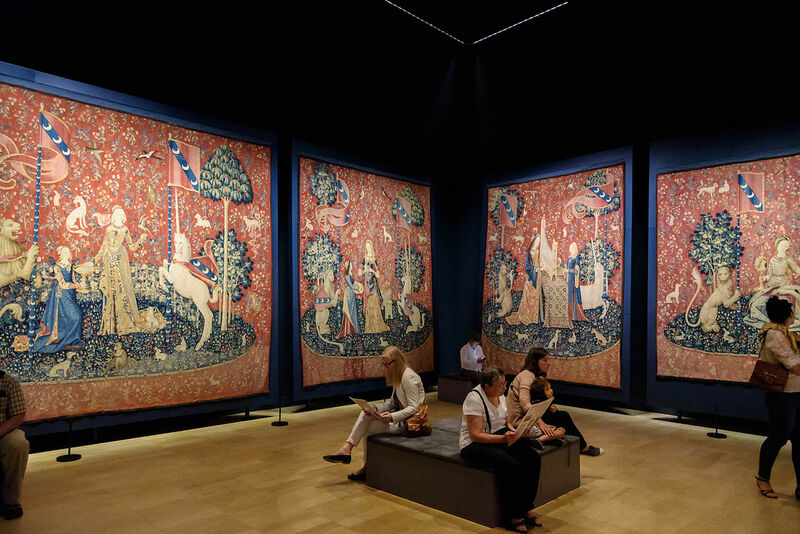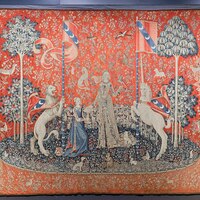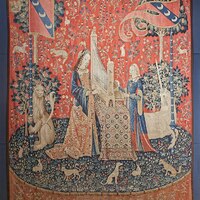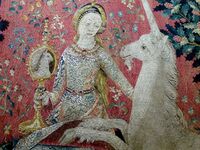The Lady and the Unicorn tapestries
Type:
Tapestries,
Textiles
Date:
ca. 1500
Dimensions:
Various sizes, each over 3 meters high
Description:
These tapestries, part of a series of six commonly known as "The Lady and the Unicorn," were woven in modern-day Belgium. Like most tapestries, they were first designed in Paris as cartoons, meaning smaller-scale preparatory drawings. The patron, whose coat of arms is visible on the pennants, was a member of the powerful Le Viste family associated with the French royal court. Although their meaning is highly debated, one common interpretation is that five of the tapestries represent different individual senses. In the sight tapestry, the lady holds a mirror in which the unicorn's reflection is visible. In the taste tapestry, she reaches into a bowl of sweets. In the hearing tapestry, she plays a portable organ. The fifth tapestry is often called "À Mon Seul Désir" (To My Only Desire / By My Will Alone), after the motto inscribed on the tent. Its intended meaning is the most open to interpretation.
Relevant Textbook Chapter(s):
11
Repository and Online Resources:
• The tapestries are now on display at the Musée national du Moyen Âge in Paris.
• Listen to a podcast about the tapestries from the CBC's Ideas program.
• Read about how medieval tapestries were made.
Image Credits:
Wikimedia Commons






